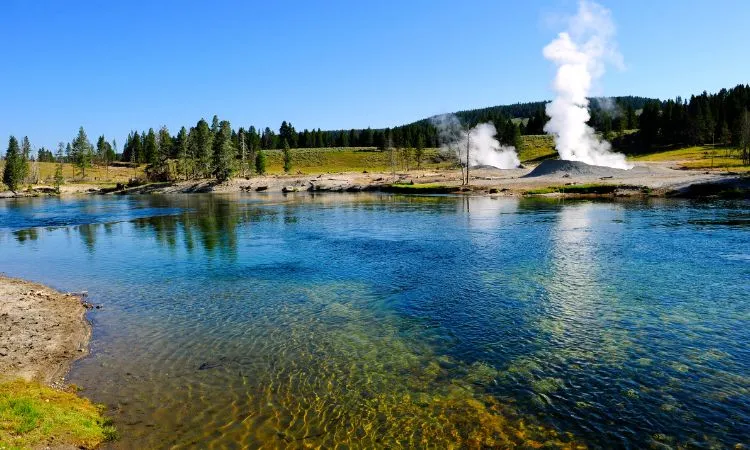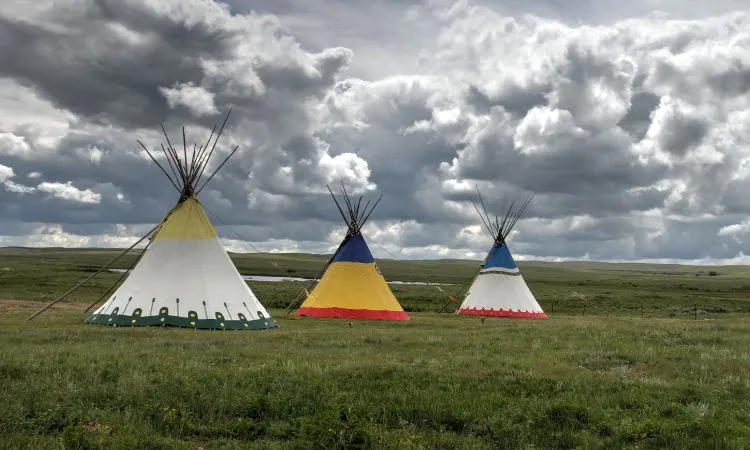Ready to escape into the wild, but not sure where to start? Whether you’re an experienced camper or a total newbie, finding the perfect national park campground can be tricky. But don’t worry—this post has got you covered! Imagine waking up to breathtaking views, clean air, and the sounds of nature—all without having to scroll through endless search engine results pages. We’ve gathered the top spots for pitching your tent in national parks across the country, making it easy for you to plan your next outdoor adventure. Get ready to pack up and hit the road!
Why Choose National Park Campgrounds?
National park campgrounds are unique for several reasons. First, they are often located in stunning natural settings, providing easy access to hiking trails, wildlife viewing, and breathtaking landscapes.
Scenic Beauty
One of the biggest draws of national park campgrounds is their scenic beauty. With locations ranging from the towering peaks of the Rockies to the serene shores of the Great Lakes, these campgrounds offer a front-row seat to nature’s splendor. Imagine setting up your tent with a view of majestic mountains or a tranquil lake.
Check Out: Popular hotels in the towering peaks of the Rockies
Accessibility and Amenities
Many national park campgrounds are designed to be accessible to all types of campers. Whether you prefer a fully-equipped site with amenities like restrooms and showers or a more rustic experience, you’ll find options that cater to your needs. Some campgrounds even offer ranger-led programs, allowing you to learn more about the local flora and fauna while enjoying your stay.
Top National Park Campgrounds to Pitch Your Tent
When it comes to national park campgrounds, there are countless options to choose from. Here are some of the top spots that you won’t want to miss:
1. Yosemite National Park: Camp 4 – A Climber’s Paradise
Yosemite National Park is a haven for outdoor enthusiasts, boasting towering granite cliffs, cascading waterfalls, and breathtaking natural beauty. At the heart of this iconic park lies Camp 4, a legendary campground that has captured the hearts of climbers and adventurers for generations.
Camp 4 is more than just a place to pitch a tent; it’s a cornerstone of climbing culture. As a first-come, first-served campground, it offers a thrilling sense of adventure and spontaneity. Its proximity to iconic rock formations like El Capitan and Half Dome makes it the ultimate basecamp for climbers looking to push their limits.
Beyond climbing, Camp 4 is also a fantastic starting point for hiking and exploring the wonders of Yosemite Valley. Immerse yourself in nature, breathe in the fresh mountain air, and create unforgettable memories.
Tips for Camping at Camp 4:
- Arrive Early: Competition for campsites is fierce, especially during peak season. Aim to arrive as early as possible to secure your spot.
- Embrace the Community: Camp 4 is known for its vibrant community. Strike up conversations with fellow campers and share stories around the campfire.
- Respect the Environment: Leave no trace and follow park regulations to preserve this natural gem for future generations.
2. Yellowstone National Park: Bridge Bay Campground – Your Gateway to Geysers
Yellowstone National Park, the crown jewel of America’s national park system, is a land of extraordinary natural wonders. At the heart of this breathtaking landscape lies Bridge Bay Campground, a prime basecamp for exploring the park’s geothermal marvels.
With a spacious 432 campsites, Bridge Bay offers ample room for campers of all kinds. Its proximity to Yellowstone Lake provides opportunities for boating, fishing, and simply soaking up the stunning scenery. Plus, the campground is a convenient starting point for hiking trails that lead to some of the park’s most iconic attractions.
Tips for Camping at Bridge Bay:
- Plan Ahead: Given its popularity, securing a campsite at Bridge Bay requires advanced planning. Reservations fill up quickly, so book well in advance.
- Embrace Wildlife Encounters: Yellowstone is home to a diverse array of wildlife. Keep a safe distance, observe quietly, and always store food properly to avoid attracting bears.
- Respect the Park: Help preserve Yellowstone’s natural beauty by practicing Leave No Trace principles. Pack out all trash, and avoid disturbing plants and wildlife.
3. Acadia National Park: Duck Harbor Campground
For those seeking solitude and an authentic wilderness experience, Duck Harbor Campground on Isle au Haut is an unparalleled choice. This remote oasis offers a truly special connection with nature.
With just five campsites, Duck Harbor provides an intimate setting surrounded by rugged coastline and lush forests. It’s the perfect place to unwind, explore, and recharge.
Tips for Camping at Duck Harbor:
- Plan Ahead: Reservations are essential and open on April 1st. Secure your spot well in advance to avoid disappointment.
- Embrace the Island Life: Disconnect from the hustle and bustle and immerse yourself in the island’s tranquil atmosphere.
- Pack Accordingly: The island is accessible only by boat, so be sure to bring everything you need for your stay.
Must-read:
- Grand Canyon National Park: Hiking Trails, Scenic Drives, and Whitewater Rafting
- Acadia National Park: Coastal Beauty, Hiking Adventures, and Lobster Rolls
Tips for Booking National Park Campgrounds: Snag Your Dream Campsite
Scoring a campsite at a national park can feel like winning the lottery, especially during peak season. Don’t despair, intrepid camper! Here are some battle-tested tips to help you secure your dream spot:
Plan Like a Pro:
- Early Bird Gets the Campsite: Many national parks allow reservations up to six months in advance. Mark your calendar and be ready to book the moment the window opens. Popular parks like Yosemite and Yellowstone fill up fast, so early planning is crucial.
- Do Your Research: Not all campgrounds within a park are created equal. Research the different offerings – some cater to families, while others are more secluded, ideal for peace and quiet. Pick a campground that suits your camping style and preferences.
Master the Online Arena:
- Recreation.gov is Your Friend: This centralized website allows you to browse campgrounds across national parks, check real-time availability, and book your site in a few clicks. Familiarize yourself with the platform beforehand to avoid reservation fumbles.
- Alert the Troops: Sign up for email alerts from the park service. Many parks notify you when cancellations occur, giving you a second chance to snag a coveted spot.
Embrace Flexibility:
- Think Outside the Box: If your heart is set on a specific park, but your ideal campground is booked solid, consider alternatives. Nearby national forests or state parks might offer similar experiences with more campsite availability.
- Weekends are Warriors, Weekdays are Winners: Peak season weekends are prime battlegrounds. Consider a mid-week getaway for a more relaxed camping experience with a higher chance of scoring a campsite.
- Split Your Stay: Be strategic! Some parks have a mix of reservable and first-come, first-served campsites. Combine a reservation for a few nights with a gamble on a first-come spot for a unique adventure.
Bonus Tip:
Download Apps: Park-specific apps often offer real-time updates on campground availability, especially for last-minute cancellations. Stay informed and act fast!
Remember: Patience, persistence, and a dash of flexibility are your best allies when booking national park campgrounds. With these tips and a bit of planning, you’ll be roasting marshmallows under a star-studded sky in no time!
What to Expect at National Park Campgrounds
Camping in a national park offers an unparalleled opportunity to immerse yourself in nature. While every campground has its unique charm, there are some commonalities to keep in mind.
Amenities and Facilities
While most national park campgrounds provide basic amenities to enhance your camping experience, the level of comfort can vary significantly. Typically, you can expect to find:
- Restrooms: These are usually basic facilities, so be prepared for a rustic experience.
- Picnic tables: Perfect for outdoor dining and enjoying your campsite.
- Fire pits: Ideal for gathering around the campfire and roasting marshmallows.
However, some campgrounds may offer additional amenities such as showers, potable water, and even electrical hookups. It’s essential to check the specific campground details before your trip to know what to expect.
Wildlife Encounters
One of the greatest joys of camping in a national park is the opportunity to encounter wildlife in their natural habitat. While these encounters are often magical, it’s crucial to prioritize safety:
- Food Storage: Always store food, beverages, and scented items securely in bear-resistant containers or in your vehicle to prevent attracting wildlife.
- Maintain Distance: Observe wildlife from a safe distance and avoid approaching or feeding them.
- Be Alert: Stay aware of your surroundings and follow park regulations to ensure a safe and enjoyable experience for everyone.
By understanding what to expect at national park campgrounds, you can better prepare for your adventure and make the most of your time in the great outdoors.
Final Thoughts
National park campgrounds are a fantastic way to immerse yourself in nature while enjoying the comforts of camping. From the breathtaking scenery to the diverse wildlife, these campgrounds offer something for everyone. Remember to plan ahead, be flexible with your choices, and embrace the adventure that awaits you in the great outdoors. So grab your gear, and get ready to create unforgettable memories at one of these stunning national park campgrounds!


